#françois couturier
Explore tagged Tumblr posts
Text

9 notes
·
View notes
Video
youtube
François Couturier · Anja Lechner · Jean-Marc Larché · Jean-Louis Matinier :Le Sacrifice ( Nostalghia - Song for Tarkovsky 2006)
Within the sound universe of Nostalghia - Song for Tarkovsky, "Le Sacrifice" stands as one of the album's most haunting and evocative compositions. François Couturier and his ensemble immerse us in a soundscape of deep introspection, where the piano, accordion, cello, and soprano saxophone converge to create an atmosphere that shifts between melancholy, tension, and resolution.
From the very first chord, the piece presents itself as a spectrally intimate work, beginning with a solo introduction by Couturier that recalls Satie’s minimalist aesthetic, yet with a more somber and restrained tone. His hypnotic and immersive execution is soon disrupted by the entrance of Jean-Louis Matinier on the accordion, adding an emotional density that darkens the atmosphere.
The development of "Le Sacrifice" is a constant exploration of the balance between order and chaos. Couturier transforms the piano into a whirlwind of cascading notes, generating an increasing tension that reaches its climax in the accordion solo. This moment of dissonance and drama is key to the musical narrative, as it illustrates the sense of sacrifice and spiritual crisis underlying Tarkovsky’s cinematic work.
As the piece progresses, the music seeks its own redemption. In the final minutes, the interaction between piano and accordion reaches a point of resolution—not necessarily with a luminous conclusion, but with a certain degree of acceptance. Here, the piece finds its essence in the search for transcendence, a concept that Couturier and his quartet masterfully handle, transcending genre labels and moving between free jazz and contemporary music with an almost mystical freedom.
Although "Le Sacrifice" contains moments of chaos and unrest, it is not chaos without purpose. Every dissonance, every break in harmony, is carefully calculated to immerse the listener in a trance-like state, similar to the effect created by Tarkovsky’s imagery. The line between form and improvisation blurs, yet the sense of spirituality and contemplation that permeates the work is undeniable.
#youtube#Nostalghia - Song for Tarkovsky#ecm records#françois couturier#anja lechner#jean-marc larché#jean-louis matinier
9 notes
·
View notes
Text
youtube
Anja Lechner · François Couturier, Vague / E la nave va, 2020
3 notes
·
View notes
Text

Anja Lechner & François Couturier
Lontano, 2020 · Play album
Anja Lechner (violoncello) & François Couturier (piano)
ECM 2682
* Lp info
0 notes
Text

Elsa Couturier by © François Lenski
22 notes
·
View notes
Note
Did Prieur Claude Antoine really have a daughter with Madame Vêtu in 1788 (or is it just a strong possibility)?
Whether Prieur had a daughter with Catherine-Elisabeth Vétu, born Joly, is something we can never know for sure, unless we go back in time and ask them. However, according to both Paul Arbelet and Georges Bouchard, who had the chance of having access to Prieur's complete collection of personal papers, there's strong evidence that the latter might have truly been the biological father of Madame Vétu's last child.
Before delving into the matter, allow me a little digression on how Prieur and Catherine came to know each other.
The two met in 1785, when he was 22 and she was 29; yes, she was seven years older than him! The former moved to Dijon both for military duty and to assist Louis-Bernard Guyton in his scientific works. The young officer needed a place to stay and one of the rooms of the Vétu family house revealed itself to be the most suitable for him. Bouchard guessed that the two might have become close very soon, allowing Prieur to eat and sleep there for free since his low salary at the time wouldn't have allowed him to always pay the rent. (1)
Not a far-fetched speculation, considering Catherine’s lively character and active participation in the management of her husband's grocery store; at that time managing a business implied a minimum of education and both a strong dedication and commitment to work; qualities that Prieur appreciated and admired in a person. On the other hand, Catherine, despite the age gap, must have been impressed by Prieur's reserved, hardworking character and polite manners, something that her husband seemed to be lacking. (2)
In 1785 Catherine already had two children, Pierre, 9 years old and Bernard, 7 years old; three years later, her last one, Claudine was born. Prieur was chosen as godfather, or offered to be.
Here's the child's baptism certificate I managed to find in the Cote-d'Or archives:
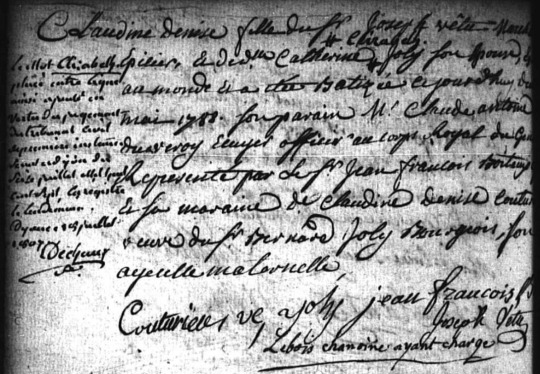
[Source: Archives de la Côte-d'Or, Registres paroissiaux et état civil, XVIe siècle-1938 (sous-série 2 E). Collection communale 1579-1792, Toutes paroisses, FRAD021EC 239/095, Vues 0252-0317 : Paroisse Saint-Jean, Baptêmes et Mariages, janvier 1788-décembre 1788, vue 279]
Claudine-Denise, fille du Sr Joseph Vétu, marchand épicier et demoiselle Catherine Joly son épouse, est venue au monde et a été baptisée ce jourd'hui 2 mai 1788, son parrain, M. Claude-Antoine Prieur Duvernoy, écuyer, officier au corps royal du génie, représenté par le Sr Jean-François Boiteux, épicier, et sa marraine, dame Claudine-Denise Couturier, veuve du sieur Bernard Joly, son aïeule maternelle. (3)
EN: Claudine-Denise, daughter of Joseph Vétu, grocery merchant and of Catherine Joly, his spouse, was born and baptized on this day 2 May 1788, her godfather being M. Claude-Antoine Prieur Duvernoy, esquire, officier in the Corps Royal du Génie, represented by Sr. Jean-François Boiteux, grocer, and her godmother dame Claudine-Denise Couturier, widow of Monsieur Bernard Joly, her maternal grandmother.
As mentioned before, the supposition that Claude-Antoine might have been more than a simple godfather stems from some facts that for Arbelet and Bouchard are pretty emblematic: In Prieur's personal notes, there's a date written down by him and another one right next to it, which not only corresponds to Claudine's birthday, but it's curiously nine months distant from the first date. I’m not an expert on 18th century customs, but it’s not unlikely that men wrote down the date in which they had intercourses with a woman to know if they were the father of the child that might have later been born. When Claudine was 17, Prieur arranged a marriage between her and a friend of his, Drappier, to whom he later associated the business the former was running at the time; at the time these engagements for a girl were her father’s or her guardian’s duty. When Prieur wrote his testament, he left quite a sum of francs to Claudine's son as inheritance and lastly, there's also a letter from an old garrison fellow of Prieur, in which there's written "I wish good morning to you and your women". (4)
I’d like also to add that from the bits of their correspondence shared by Bouchard and the overall treatment Prieur reserved for her throughout her life, the two seemed to be pretty close, linked by an intimacy that goes beyond the one between a woman and an old family friend. He was always there for her, sent her various gifts and helped her financially. In my opinion, this further confirms the hypothesis that Claudine was his real daughter.
Why did he never adopt her, not even after Joseph Vétu’s death? It’s a question that those who wrote about Prieur never asked themselves, but that I personally wonder. The only thing I can think of right now, given my limited knowledge, is that he didn’t want to give her his surname and cause her to be persecuted. Despite never being the target of slander, he had been part of the revolutionary government responsible for the Terror and not a normal one, but a member of the “bloodthirsty Committee of Public Safety of Year II”: so was the view of the Great CSP during the Napoleonic Era and Restoration.
It’s Prieur himself that in a letter dated 1814 to General Marescot reveals he resigned from public life at the beginning of the century because he foresaw the persecution the members of the government prior to the Consulate would have endured. (5) If he had had a concern for his daughter, it would have been a legitimate one: Sadi Carnot couldn’t advance in the army, despite deserving it, and was denied some positions, because of the surname he bore.
Edit: thanks to @nesiacha 's detailed answer about inheritance and legitimate/illegitimate children during the First Empire a more plausible reason why Prieur decided not to legally adopt her lies in the fact that Claudine not only wouldn't been granted the same rights as a natural child as far as inheritance was concerned: she would have received significantly less; but also illegitimate children were often viewed in a very hostile and negative way, in some instances, even considered as "monstrosities in the social order" and a "real calamity for morals". He clearly didn't want to stain Claudine's honour. Last but not least, Prieur and Catherine-Elisabeth never married after Joseph Vétu's death and the latter recognised Claudine as his daughter when she was born, so I don't think it would have been easy for Prieur to pass over this.
References
G. Bouchard, Prieur de la Côte-d’Or, 1946, p. 54-58.
P. Arbelet, La jeunesse de Prieur de la Côte-d’Or, Revue du dix-huitième siècle, 1916, p. 38-51
Notes
Curiously in their correspondence, Claudine always calls Prieur "mon cher parrain" (= my dear godfather) and nothing in those letter hints at the fact she might have known her real father's identity.
On page 56 of Prieur’s biography, Bouchard affirms with confidence that the date of Thursday 1 December 1785 which Prieur wrote in his “Tableau du temps... depuis 1782 jusqu'en 1792.” - a sort of list of the main events of his life - corresponds to the latter’s unofficial engagement with Catherine. Considering that Prieur arrived in Dijon in August, it means it took them four months to fall in love with each other. Though, except for a vague remark on “a certain number of coincidences that would be too long to report”, Bouchard doesn’t explain in specific how he got to that conclusion.
From some letters and papers that Prieur kept, Joseph Vétu appeared as a “lousy and insignificant man” (G. Bouchard, p. 56).
Transcription by Bouchard (p. 58 of his biography)
Letter from Andréossy to Prieur (G. Bouchard, p. 361).
Letter to Marescot of 18 April 1814 (G. Bouchard, p.380-381).
#claude antoine prieur#claudine denise vetu#prieur de la cote d'or#claude antoine prieur duvernois#prieur duvernois#frev#prieur de la côte-d'or
26 notes
·
View notes
Text
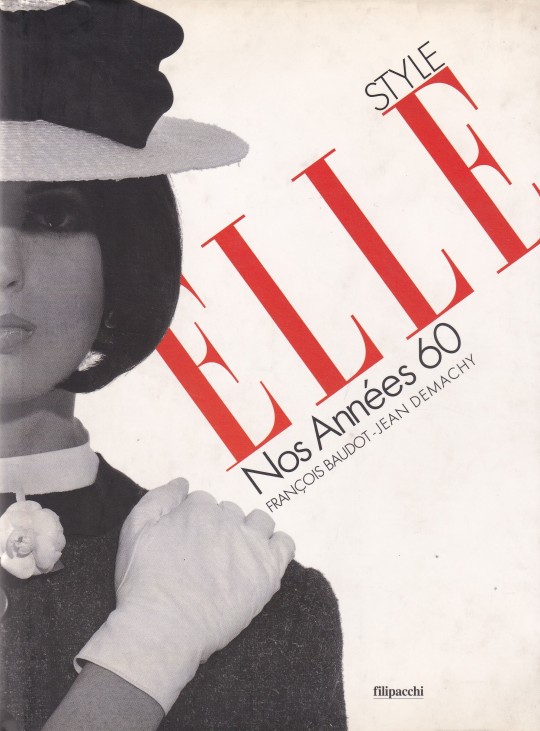

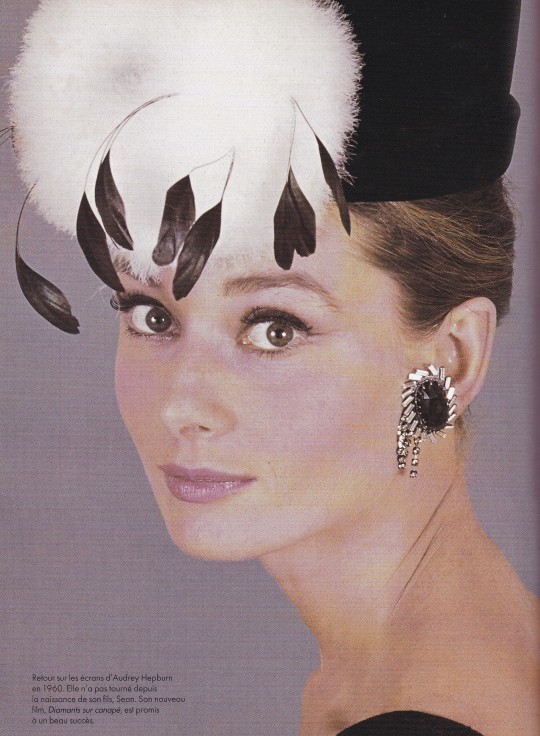

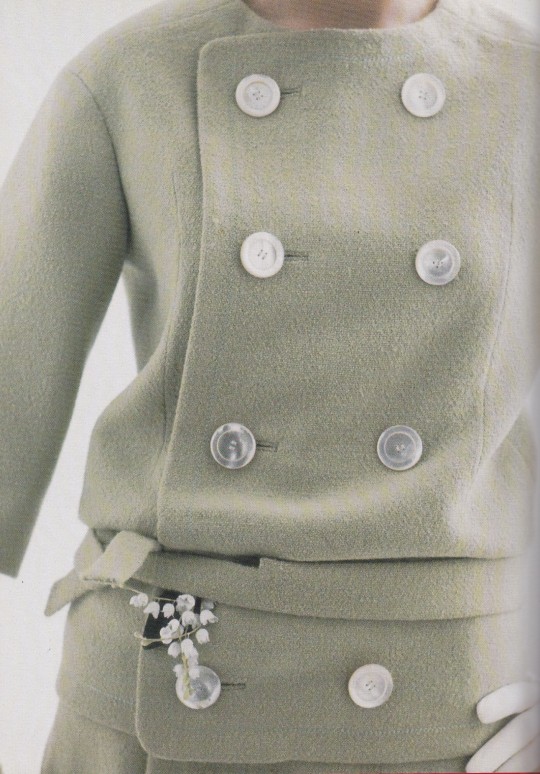

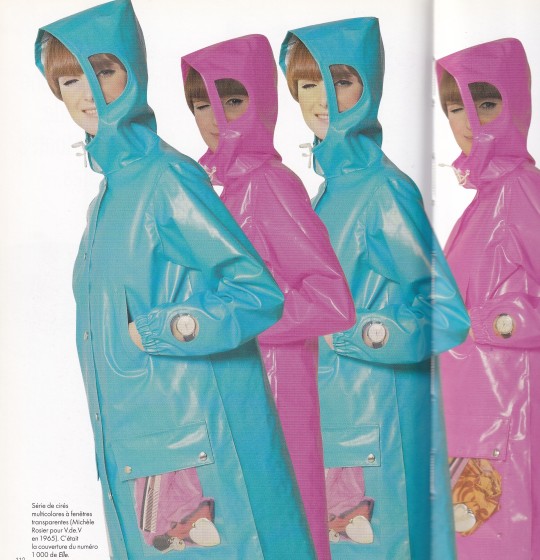
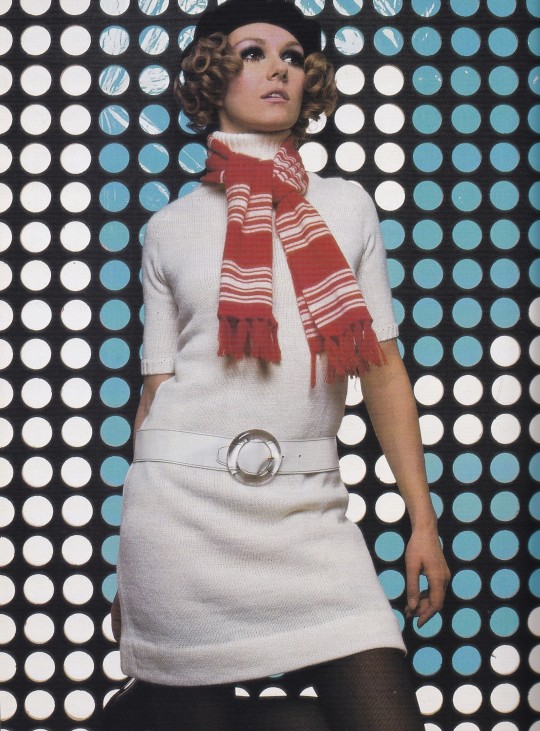


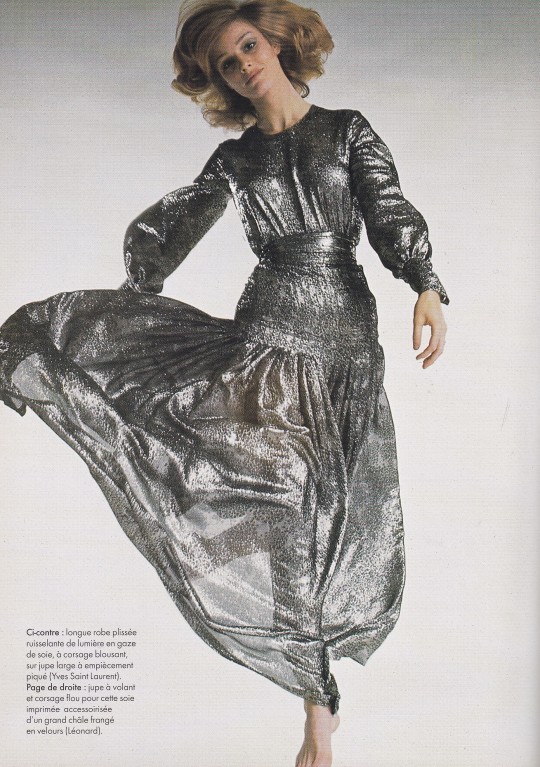

Style Elle Nos Années 60
François Baudot - Jean Demachy
Filipacchi, Paris 2002, 182 pages, 18x23cm, ISBN 9782850187476
euro 40,00
email if you want to buy [email protected]
La mode des années 60 autorise toutes les folies, encourage toutes, les audaces. De jeunes couturiers s'en donnent à cœur joie : Paco Rabanne s'attaque au métal pour Françoise Hardy, Pierre Cardin se joue des formes et des couleurs, Yves Saint Laurent ouvre sa propre maison de couture... Et les robes de Courrèges virevoltent dans les surprises-parties au rythme de Bob Dylan ou de Johnny, l'idole des jeunes. La mode aussi a ses idoles : les top-models font leur apparition. La fine silhouette de Twiggy et les grands yeux clairs de la " Shrimp " s'affichent un peu partout sur papier glacé. La popularité des stars hollywoodiennes ou de " Salut les Copains " se mesure dans la rue où l'on adopte le chignon impeccable d'Audrey Hepburn et les couettes ébouriffées de Sheila. Quarante ans plus tard, nous continuons d'être fascinés par cette décennie enchantée. Mieux qu'aucun miroir, ELLE a su en saisir tout l'éclat et les nuances. Et c'est à travers son prisme que nous pouvons la redécouvrir aujourd'hui.
16/04/24
#Stile Elle#LDO#Années 60#sixties fashion#Paco Rabanne#Pierre Cardin#YSL#Courrèges#Twiggy#Audrey Hepburn#Sheila#Romy Schneider#Alain Delon#moda anni sessanta#fashion books#fashionbooksmilano
25 notes
·
View notes
Text










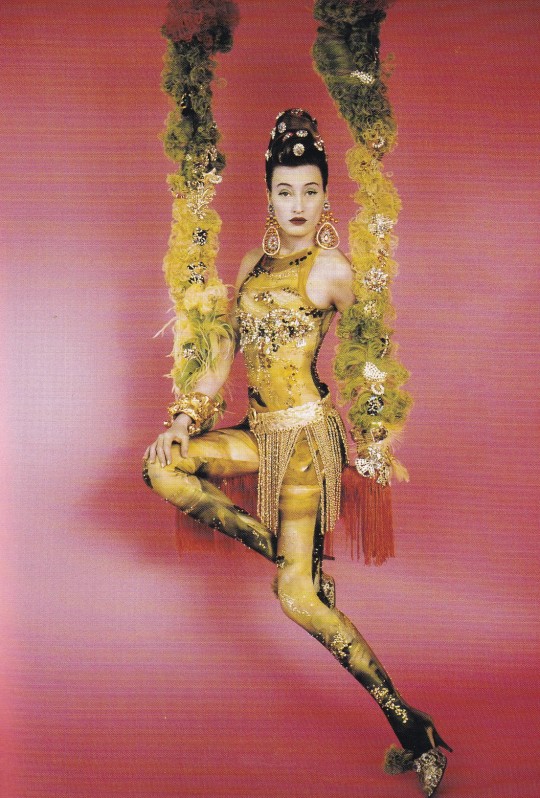



Christian Lacroix
François Baudot
Coll. Mémoire de la Mode
Edition Assouline, Paris 1996, 80 pages, 11,6x22cm, ISBN 9782908228588
euro 25,00
email if you want to buy [email protected]
Benjamin des grands couturiers, héros malgré lui du petit monde étincelant de la mode, Christian Lacroix reste surtout, pour les années quatre-vingt, celui qu'on n'attendait plus. Le prince charmant qui, d'un souffle, a réveillé l'art et les belles manières de la couture. En créant sa propre maison, en proposant des collections déconcertantes de luxe, de fantaisie, d'insolence, Lacroix prenait le monde et la logique à contrepied. Le temps semble avoir donné raison à ce timide épris de théâtre, de littérature et de traditions. Un créateur à la nature profondément artiste qui nourrit son œuvre de culture et de cette recherche du temps perdu qui faufile la moindre de ses robes.
15/06/24
3 notes
·
View notes
Text
Mémoire de la Mode - Yohji Yamamoto
by François Baudot (1997)
Those who wear my clothes try to assert a single opinion,” says Yohji Yamamoto. This essential way of thinking about fashion, which he has succinctly expressed for more than 20 years, sums up his own creative activity. In contrast to the extremely rich era of haute couture, the glorious side of prêt-à-porter, and the futurism of the avant-garde, Yamamoto, a Japanese man, asserts the strength and difference of Yamamoto's style in a small but decisive way by returning to clothing archetypes, choosing neutral expression, and employing a simplified palette and register. The return to traditional Japanese patterns and the use of a more neutral expression, a simplified palette and registers (designs), all of which gradually but definitively assert the strength and difference of the Japanese style. Examining the couture of Paris as well as the traditional Japanese garments, the silhouette of his work explores a whole new realm of fashion appearance and behavior. In this turbulent century, more has emerged than has been raised in a thousand vears of fashion issues.
The couturiers who had been at the height of their powers in the 1950s were forced to admit that in the decade that followed, the power of the designers was slowly being established. These designers contributed to the growth of the big brand manufacturers,
The first generation of "young creatives" was born. The style of the young creators, a necessity for the majority of Parisians, would later suffer from a regimentation of Italians who were transformed into better and better supporters.
Thus, from 1965 to 1985, many of the directions of couturiers and fashion creators in the bretaille were developed, loved, and organized. The focus, the baroque, the traditional exuberance, etc., were all confined to their own creations, which in the early 80's were documented by those who would be defined as "conceptualists". This expression of premillennialism is a new trend that emerged in the plastic arts between 1950 and 1970, in which ideas, qualities, and analysis of concepts and results took the place of the body of work through the artist's creative activity.
This is precisely the "opinion" that Yamamoto presents. The public art of dreaming is considered elusive, but it wants to approach the public from the outset, while focusing on the real.
Today's fashion follows artists whose work has not been consumed by the market economy for the last ten years or so, and minimalist artists are proud of their fame as somewhat distant successors to Marcel Duchamp. The monochrome paintings of Ad Reinhardt, the charcoal forms of Donald Judd, Sol LeWitt and Karl Andre, the ergonomics of everyday materials, the theatrical art of Janis Knellis, Mario Merz and Giulio Paolini, the so-called Arte Portuguera, are just a few of the artists who are represented. These variations of modern art are the most important examples of the modern art of the past. These variations of modern art tend to be all about integrating the everyday into the everyday life, to bring the short image back into its original role and to capture it from a new perspective, whether it is a block of paper, a torn poster or the neon lights of a metropolis.
Even if Yamamoto does not seek the status of a so-called artist, his later works show an unusual sensitivity to the currents of the times by not using an original approach to the body of art. It is the same as what the couturiers of the previous era showed against cubism, Russian ballet, or pop art. For example, Andy Warhol, in his hot tea in the 70's, uses the verbal expression "a department store is like a museum" and turns the expression upside down to "I like Rome, because it is a museum after all, like the department store in Bloomingdale’s".
Pulte Pozzella goes even further and uses the same primitive elements of this addition, such as scraps, shavings, starch, coal, etc., as the main ingredients of the original product. In the same way, amoto is one of the few who, in the turbulent thirties, reads a rupture with the traditional idea of "entertainment". Likewise, Yamamoto is one of the few who, in the turbulent thirties, reads of a disconnection from the traditional ideas of "entertainment". He is one of the few who reads a break with the traditional idea of "kogei", which until then had been considered fascinating!
In order to accept the bags, he redefined his own relationship with the male (or female) body, redefined the relationship between beauty and certainty, antiquity and the future, and memory and modernity in a way that has become a tradition in a context where most people have no separate understanding of the relationship between these things.
Black, "the silhouette of all silhouettes in the shadow of the ultimate plate," is the best weapon for questioning what we wear, as was the case with Chanel in the early part of this century. The collection is a true dress for shadows, encompassing the silhouettes of mystery, without house-cloths, anchors, or detailing. In the midst of a glorious body of beauty and a civilization that is unspoiled by any day, Yamamoto invented a new discipline: summiting. His originality has no national origins, no beginnings, and even the slightest pretension has been removed. In other words, "back to the core". This is his philosophy of hair persuasion.
His creations, which are the source of his ideas for means and costumes, represent the national trend toward the impractical idea of 1. In response to the definitive selection of the eponymous quality of "elegance," he transposed it into an environment that is recognized as beautiful and vernacular in our time. In its ascetic variations, Hara Shu's archaeological₴, or Sugata's style, continually reexamines itself, blurring the line between the ephemeral and the immutable. Thus, like all important events in the fashion world in the past, the "classic" is born.
The modern form of the dress is a secret, enduring elegance with contemporary significance.
The wealth of the world is maximized by the power of the mind.
His surname means "at the foot of the mountain". In 1943, he was born in Tokyo and grew up in a small town called Kogei.
He grew up in Japan, where his parents, both war widows, were the elders of the Imperial Japanese Navy. He grew up in Japan under the guidance of his father, a war widower, who was the head of the Northeast Asian Women's Association (NWA).
Without any certainty, he attempted to enter the elite society of Japan with the given discipline and purpose. However, he surprised his parents by finally deciding to return to their place. As a condition of working in the store, his parents wanted him to attend the famous cultural and artistic exhibitions. Although this was to help him learn the basics of the trade, it was a problematic, emotional, and busy few years for him. The only male student was Yamamoto, the highest paid student in the school.
The reason is that he was a student. The only thing that the remaining customers later asked for was a copy of Bali's latest model. But the hardest part of the evening was that whatever little money was made from it could be used for one's own production.
In 1UGU, Yamamoto enters a competition and receives a bariatric travel grant. He spent eight months in the heart of fashion without a single centimeter and without money. It was enougn to find work as a designer. He spoke no French, hardly spoke a word of the language, and made all kinds of tea instead. He was particularly interested in the bret-a-porter that was then emerging in Saint-Germain-des-Prés. He felt that he had become fascinated by this kind of artlessness.
After returning to Tokyo in 1972, he established the Y’s Company, which presented its first collection in Tokyo in 1977.
In 1981, he participated in a fashion show in Paris with Kawakubo. Later, in 1981, he and Kawakubo participated in a fashion show in Paris, which caused a sensation in Paris. At this time, the world's press was forced to decide where to go. The question was whether or not they would accept the change in fashion and fashion show format that had been working so well. While there was a lot of criticism about the show, there were also voices from the side of the fashion industry that were opposed to the show. The unknown artists were now in the limelight amongst the solder community.
The Liberation newspaper on the day of the show was titled "A leading role for Japanese in the French fashion world". Michel Claesol wrote: "The original surfaces that we will dye in 1982 will be worn for the next 20 years -
What Courrèges and Cartan proposed around 1200 as being applicable until the year 2000 AD is now as old as a Soviet science fiction movie. For a long time, French couturiers thought that couture, like science, was a way to right the wrongs of the past. But Japanese designers foreshadowed something when they wrote, "Japanese designers are preparing to make it possible for real families to quickly decide what clothes and accessories to wear when they have only 30 minutes before going out • • • •
This premonition was confirmed 15 years later when Yamamoto became a businessman as well as a creator. In 1981, he began to work on costumes, the cornerstone of conservatism, although he himself pronounced that he was not interested in money and had little of it. He was the first to take up the position of vice president of the company, and he was the first to be promoted to the position of president.
To accompany him, he thought he had to break the heavy connotation of the three-piece costume. As a result, he came up with a costume that was soft and dusky without escalating the extremes. The White shirts are an expression of neoclassicism without being harsh or authoritative.
Low folds, narrow shoulders, three-button jackets, pants that bend at the hem and narrow at the knee over well-polished shoes - all have had a decisive influence on the male silhouette for more than a decade. But he has the skill to weave in the constancy of the waterway, to put many men at ease who do not want to feel like victims of the mode. In a recent film set in Germany during the period between the two world wars, a dressmaker is accused of artificiality and of being "a man of the world".
The actors are dressed in Yamamoto style without making anyone feel "retro".
If fashion is about clothing, it is not essential. But if fashion is to feel our daily life, it is not indispensable. Painting, crimping, and other art forms,
There are very few things that can directly influence people, such as fashion and music, which are inexpensive. Fashion is the essential and only communication about the sensations of a generation of people who wear what they want to wear.
Yamamoto is the most philosophical of fashion creators. The wildest of the wild rivers. But perhaps he is the most disillusioned of all.
Making clothes is about people. I always want to meet and talk with people. That's what interests me the most. What do they do? What do they think about? What kind of life do they lead? After thinking about these things, I get to work. I start with the fabric, the material, and the "touch" of the fabric, then the form. Touch is the most important place for me. Once I get into the material, I am obsessed with the material becoming form," he functions. All of Yohji Yamamoto's garments start from two points on the chain. From there, the fabric flows down in the best possible way and the material remains alive.
When he quietly entered the over-accessorized, organized, and glitzy world of Parisian prêt-à-porter in the 1980s, Yamamoto's designs were plump. At the time, Yamamoto's designs were plump as he quietly entered the world of Parisian prêt-à-porter in the 1980s. The fabrics he incorporated into his details were so close to the body that they never touched it. His clothes were generally thick, translucent, and dark in color, sometimes without embellishment.
The medieval simplicity is accompanied by an "old-fashioned" effect. The simplicity of the Middle Ages is accompanied by a "worn-out" effect, which some have labeled "afterpunk" (grunge did not exist then). The passing of time is etched and the matted accessories are familiar.
This aversion to novelty can already be seen in the British dandies. They would intentionally make their boots look old, or allow their servants to wear their "camel's fur" for a year or two before wearing it themselves.
The extremely large capes, misshapen cloaks, and unrealistic symmetrical jackets are all the result of the creator Yamamoto's dream: "My dream is to design time. Symmetry, the symbol of perfection, lacks something human.
He confides in Wim Wenders, who entrusted him with a feature film. The scissors and the fabric reverse man prefers to base his work on something truly human. Therein lies his point of departure. For example, the authorship of the clothes worn by hundreds of unknown models.
During both World Wars, he was the model for the photographer August Sander, a worker of the most German men and women. The bungalows, the salovettes, the fishermen workers. The world of the photographer's own world is also engraved in the crosswalker's layered attire all the way down to the soles of his shoes.
The clothes that suit the person wearing them disappear before the personality of the person who chose them. Yamamoto is : "Whether a season's fashions are White or White
White is not the responsibility of the creators, but the responsibility of those who see and buy them. Where is the Japanese touch? World citizen Yamamoto admits to having discovered his own style by examining the history of fashion, especially couture. As for his appearance as a native of Japan, he says, "Japanese influence? I don't care a bit about that. The creator, one of the country's most talented people, criticizes his own country as well as a systemic fixation that is sometimes unappealingly heavy-handed: "I happen to be a Japanese student. I happen to be born in Japan," he says. I was born in Japan by chance, but I have never felt that I have taken advantage of that label. But it is hard not to see the influence of tradition in the subtlety of the fabrics that Yamamoto wears on his body, in the timelessness or vulgarity of his style, and in the shamefulness of his models. Imagination, stillness, and even abstraction become the web of the kimono and the wool of the fur, the fabric of Yamamoto's weave. The imbalance between the wild and the refined, between natural materials and technological products, between the land of the senses and the land of the emotions, is astonishingly calculated. This is why the world is attracted to the Far East. All of these refined values can be found, without the slightest pretension, in the work of Yamamoto himself and in his daily work as a consummate designer.
He is the longest-serving designer of men's and women's looks at the end of the century, expressing the uncertainties, anguish, contradictions, and passions of the time. The same goes for the value of maturity. It is a somewhat forgotten value of the glorious thirties, but one that will endure long into the future.
for pictures, see @archive-pdf’s scan of the book.
14 notes
·
View notes
Text
Franҫois Couturier & Dominique Pifarély PRELUDES AND SONGS
FRANÇOIS COUTURIER & DOMINIQUE PIFARÉLY PRELUDES AND SONGS ECM Records Franҫois Couturier, piano; Dominique Pifarély, violin. This seemed to be the perfect album to listen to on a Sunday morning: peaceful, classical, warm and beautiful. The delicious sounds of just violin and piano fill the house with serenity. This duo is spectacular, with a bit of Avant-garde thrown into the musical soup like…
0 notes
Video
nuit blanche by Dave Binyon Via Flickr: Sounds : Right Click and select "Open link in new tab" www.youtube.com/watch?v=g6PQO8MKb3Y François Couturier, Tarkovsky Quartet - Nuit blanche
0 notes
Video
youtube
Anouar Brahem : Vague / E la nave va
This album by Anouar Brahem (Le Voyage De Sahar) is a masterful fusion of traditional Arabic music with elements of contemporary jazz, showcasing an artistic sensibility that transcends borders and genres.
One of my favorite pieces is "Vague / E la nave va," which stands out for its ability to transport the listener to a contemplative state, evoking arid landscapes and open skies. The composition is a musical dialogue between the oud, François Couturier's piano, and Jean-Louis Matinier's accordion. Brahem leads with his delicate and expressive touch on the oud, offering a melodic narrative that fluctuates between nostalgia and introspection.
The piece unfolds with a structure that seems simple on the surface but reveals melodic and harmonic depth upon deeper listening. Couturier's piano chords add a subtle atmosphere, creating a harmonic cushion that intertwines with the oud, while the accordion contributes a melancholy yet bright color, drawing nuances that enrich the musical texture.
The rhythm of the composition moves with the calm of waves, reflected in its title ("Vague," meaning "wave" in French). The fluidity of the passages and the way the instruments complement each other suggest an intimate and serene conversation between the musicians, achieving a cohesion that envelops the listener in an almost cinematic trance.
5 notes
·
View notes
Link
De Duitse celliste Anja Lechner en de Franse pianist François Couturier treden op zondag 27 oktober 2024 op in het fraaie gemeentehuis van Bloemendaal. Anja Lechner is een gerenommeerd klassiek celliste die bekend staat om haar veelzijdigheid in zowel de klassieke als de improvisatiemuziek. François Couturier is een beroemde Franse jazzpianist en componist. Anja Lechner treedt op als soliste met toonaangevende orkesten, als kamermusicus en als creatief deelnemer aan uiteenlopende projecten. Ze heeft Cd’s opgenomen met het Tallinn Chamber Orchestra, met het Rosamunde Kwartet, de Argentijnse bandoneonmeester Dino Saluzzi, de gitarist Pablo Márquez en het Tarkovsky Kwartet. François Couturier speelde met muzikanten als Anouar Brahem, John McLaughlin, Louis Sclavis en Dominique Pifarély. In 2006 richtte hij het Tarkovski Kwartet op waar ook Anja Lechner deel van uitmaakte. Sinds 2012 spelen Anja Lechner en François Couturier ook als duo. De samenwerking tussen Anja Lechner en François Couturier leverde tot nu toe twee albums op. In 2013 kwam “Moderato Cantabile” uit. Een parel van een plaat die terecht een groot succes werd. In 2020 volgde “Lontano” waarvan tijdens het concert in Bloemendaal veel stukken gespeeld gaan worden. De achtergrond van zowel Lechner als die van Couturier is op “Lontano” duidelijk te herkennen. Ze bundelen de kracht van de klassieke celliste en de jazzpianist. Mooi om Lechner klassieke structuren vanuit de cello op te horen zetten en Couturier daar met jazzinvloeden op in te horen spelen. De samenwerking brengt daardoor echt nieuwe muziek teweeg. Het concert begint om 11.00 uur (zaal open 10.30 uur). Een kaartje kost € 25,-. Jongeren tot 26 jaar betalen €12,50. Kaarten zijn online te koop via https://www.muzenforum.nl en op de dag van het concert aan de zaal (alleen pinbetaling), Bloemendaalseweg 158 in Overveen. Het concert wordt georganiseerd door Muzenforum. Deze stichting organiseert ieder jaar van september t/m april acht zondagochtendconcerten. Diversiteit in het aanbod staat voorop: van solisten tot ensembles en zowel instrumentaal als vocaal. Op de website https://www.muzenforum.nl vindt u meer informatie over het concert.
0 notes
Text

Toru Takemitsu (1930–1996)
Songs · https://spoti.fi/2XPUIwe
Dominique Visse (countertenor) & François Couturier (p)
* Lp info
0 notes
Text

Elsa Couturier by © François Lenski
11 notes
·
View notes
Text

Mercredi 29 mai 2024 à 19H, la Petite Boutique Fantasque est dans des affres mathématiques. On appelle petite boutique fantasque toute émission diffusée sur l'antenne de Radio Radio 106.8 mHz (Toulouse) le mercredi à 19H ou sur https://www.radioradiotoulouse.net pour la diffusion numérique en temps réel et la balado-diffusion. On distingue les petites boutiques fantasques de 1er ordre et de 2nd ordre. Les petites boutiques fantasques de 1er ordre ne contiennent aucune trace de terre de la place Pinel. Marius Pinel en est absent. Les PBF de 2nd ordre sont dites pinelisées car elles contiennent la chronique de l'univers place Pinel de Marius Pinel. Mais là, aujourd'hui, nous nous trouvons devant une exception. Nous avons bien Marius Pinel mais dans une interprétation d'un extrait des Shadocks de Jacques Rouxel et Jean-Paul Couturier.
Programmation musicale :
1) Samba miaou (Full moon ensemble) 2) Oreilles de veau (Siver d'argent) 3) Presque dans la cuisine (Julien Louvet / Damien Schultz) 4) lambeth walk (Wizex) 5) Les maisons toutes pareilles (Les cowboys fringants) 6) Duo des dindons (Edmond Audran) Juliette / François Morel 7) Improvisation sur le Barbier de Séville (Giacomo Rossini) Farah Fersi 8) Désuétude (Charlie Schlingo) 9) Exit music (Brad Mehldau) 10) Les gens qu'on aime (Philippe Brach) 11) Garden of love (Dora / Caroline Champy) 12) L'arbre (Arthur H.)
+ lecture d'un extrait des Shadocks (Jacques Rouxel et Jean-Paul Couturier) par Marius Pinel capté lors du festival des Bruissonnantes 2024 au théâtre du Hangar
Pour ceux qui auraient piscine indienne, ou toute autre obligation, il y a une possibilité de rattrapage avec les podcasts de la PBF : https://www.mixcloud.com/RadioRadioToulouse/théorème-de-la-passoire-la-petite-boutique-fantasque/
Sus aux Philistins !
Photographie de Martha Norelius par Underwood & Underwood 1925
0 notes
